The life of Arctic Fox in Hornstrandir (Iceland)We are lucky enough to work in one of the wildest places in the world: Hornstrandir nature reserve in Iceland! This is where we offer an Arctic Fox photo workshop. We take amateur and professional photographers to discover the life of this small canid, a close cousin of the red fox, which leads an extreme life in this hostile region.
We’ve been travelling through this region for many years. We’ve got to know the species that live there and observe them at different times in their lives. In this article, we’re going to tell you about the life of the Arctic Fox in Hornstrandir, a little paradise for naturalists!
Hornstrandir nature reserve
Hornstrandir is a nature reserve located in the Westfjords of Iceland. This peninsula, accessible only by boat, is uninhabited. The last humans to live there left in the 1950s. Since then, the reserve has been home to Arctic Fox and millions of seabirds that nest on the cliffs and tundra.
The reserve is a succession of bays, fjords, mountains and steep cliffs. The terrain is very difficult to access and the climate is harsh. This reserve, shaped by glaciers, takes its name from the horn in Hornvik Bay and the region where it is located: the strandir.
The few humans you may come across in the reserve are either scientists and volunteers from the Arctic Fox Centre (located in the village of Súðavík, in the Westfjords), professional photographers and film-makers, or the few experienced hikers who venture out.
The Hornstrandir reserve has been protected since 1975. The aim of this protection is to guarantee a breeding ground for the millions of birds that nest there, to create a refuge for the European Arctic Fox and to protect the unique flora of the region. Rangers criss-cross the reserve to guarantee this protection and ensure that the rules are respected.
Le renard polaire Islandais
During the last Ice Age, which ended around 11,000 years ago, Arctic Foxes were able to cross the North Atlantic to Iceland thanks to the pack ice. When the ice retreated, the foxes stayed and settled there for good. They are now at home in Iceland, and are the island’s only endemic land mammal. Other mammals such as reindeer, Icelandic horses and sheep have been imported by humans.
The Icelandic Arctic Fox has adapted to its environment. To hunt seabirds on cliffs, it has acquired incredible climbing skills. No wall, not even a vertical one, can stop it. But there’s another adaptation to note: while everywhere in the Arctic, 80% of Arctic Foxes are white, while the remaining 20% are brown, in Iceland this figure has been reversed! Because Icelandic rock is often dark (basalt), brown foxes have a better chance of survival than white ones. After several millennia of natural selection, the Icelandic fox has become predominantly brown, although white foxes are common.
The Brown Arctic Fox
Brown Arctic Foxes have a dark colour that blends in with the Icelandic rock. It is sometimes difficult to see them on beaches and cliffs. These foxes, also known as blue foxes, keep the same colour all year round, although the sun sometimes turns their fur blond in summer.
The white Arctic Fox
White Arctic Foxes change colour in summer. In winter, their immaculate white fur perfectly mimics the snow, but in summer it turns grey on the back and beige on the belly, ideal for camouflaging in the tundra.
The Arctic Fox in Hornstrandir
The Hornstrandir nature reserve has the highest density of Arctic Fox in the world! And we see this every year during our photography workshops. The absence of humans, the ban on hunting in the reserve and the abundance of food have all been favourable conditions for this species, which is threatened throughout the Arctic.
In the reserve, some of the most dominant foxes occupy dens at the top of the cliffs, while others are forced to occupy the beaches.
With the abundance of seabirds, cliff foxes have more opportunities for food, so they rear large litters each summer (between 6 and 12 cubs). Beach foxes, on the other hand, have to make do with what the ocean throws up, which considerably reduces the life expectancy of their young and the size of their litters (3 to 4).
We know a large number of Arctic Fox dens in Hornstrandir, which allows us to observe the distribution of territories each year. We can see just how opportunistic this species is, and how uniquely adaptable it is.
Hornstrandir’s Arctic Foxes in summer
When we talk about summer, we need to specify that we’re talking about the Arctic summer, which is very short in Iceland (from mid-June to mid-August). During this season, with temperatures ranging from 0°C to 15°C, nature wakes up, birds reproduce and vegetation grows at breakneck speed, because time is of the essence. It’s the same for the Arctic Fox in Iceland – every day counts!
The Icelandic Arctic Fox breeds at the end of winter. The cubs are born in mid-May and begin to emerge from their dens in mid-June. During this period, the adult foxes spend most of their time travelling back and forth to feed the cubs. Seabirds, eggs, fish washed up by the ocean, crustaceans… no food source is overlooked as the foxes scour their territory for the slightest opportunity!
We are organising two Arctic Fox photo workshops during this period. Observing this explosion of life is a privilege that we share with the participants. We set up small working groups (2 or 3 people) to enable participants to get the most out of the workshop, but above all to limit the pressure we put on the animals.
Hornstrandir’s Arctic Foxes in winter
In winter, the Hornstrandir reserve is a hostile territory. Connections are closed, storms daily, this environment is reserved for experienced people who are used to the cold and violent winds.
During the winter, Arctic Foxes go into survival mode. The seabirds have left the cliffs, and all the foxes have left is the ocean and what it throws up, plus the crustaceans that are accessible at low tide. During this period, which runs from October to March, the foxes search the beaches at low tide to find food. They limit their movements to what is strictly necessary. At high tide, they take shelter from the wind and wait for the next low tide.
During this period, any disturbance can have dramatic consequences. We therefore avoid visiting the reserve in winter.
In March, with the arrival of milder temperatures for Arctic Fox (but not necessarily for humans), the mating season begins! For a month, the foxes search for their partners and reproduce. Competition is fierce, and fights between males can be violent.
Finally, in May, the females give birth. The snow is melting, temperatures are rising again and the seabirds are settling in again.
As you can see, life for the Arctic Fox in Hornstrandir is a real obstacle course. The survival of this species depends solely on their ability to feed well in summer and find the slightest food in winter.
Our Arctic fox photo workshop in Hornstrandir
Observing and photographing Arctic Foxes
The aim of our Arctic Fox photo workshop is to take you to the heart of the fox territories, in the Hornstrandir nature reserve. You will be accompanied by a wildlife photographer and a landscape photographer who know the reserve perfectly and who will guide you in this quest.
Over the course of 8 days, we’ll travel across the tundra, between cliffs and black sandy beaches, explaining the life of the Icelandic Arctic Fox and observing and photographing adults and cubs. A unique and privileged experience that we offer to a very limited number of people each year.
The aim of this article fox photo tour is not just to take photos of Arctic Foxes, but also to discover the wildlife of the tundra and improve your knowledge of the species that live around the Arctic Circle.
Finally, ethics are an important part of our adventures. Following us means respecting a certain number of rules to limit our impact on the flora and fauna of the Hornstrandir nature reserve.
The other animals of the Hornstrandir reserve
If the Hornstrandir reserve in Iceland is the kingdom of the Arctic Fox, it is no less rich in wildlife. On our way to the reserve, we regularly saw humpback whales, minke whales and sometimes orcas.
On the beaches, curious harbour seals regularly come to watch us.
But it’s above all the dozens of species of birds that we see both on the cliffs and inland. The most common are the northern fulmar, the common guillemot, the black guillemot, the rock ptarmigan, the Red-necked phalarope, the purple sandpiper and numerous species of ducks such as eiders and harlequin ducks. We have even spotted short-eared owls, white-tailed eagles and gyrfalcons.
Finally, given that hunting is forbidden in the Hornstrandir reserve and that humans are virtually absent, the animals are not very shy. Watching wildlife there is an incredible experience. Despite this, we remain vigilant and forbid any interaction with the animals.
We are lucky enough to work in one of the wildest places in the world: Hornstrandir nature reserve in Iceland! This is where we offer an Arctic Fox photo workshop. We take amateur and professional photographers to discover the life of this small canid, a close cousin of the red fox, which leads an extreme life in this hostile region.
We’ve been travelling through this region for many years. We’ve got to know the species that live there and observe them at different times in their lives. In this article, we’re going to tell you about the life of the Arctic Fox in Hornstrandir, a little paradise for naturalists!
Hornstrandir nature reserve
Hornstrandir is a nature reserve located in the Westfjords of Iceland. This peninsula, accessible only by boat, is uninhabited. The last humans to live there left in the 1950s. Since then, the reserve has been home to Arctic Fox and millions of seabirds that nest on the cliffs and tundra.
The reserve is a succession of bays, fjords, mountains and steep cliffs. The terrain is very difficult to access and the climate is harsh. This reserve, shaped by glaciers, takes its name from the horn in Hornvik Bay and the region where it is located: the strandir.
The few humans you may come across in the reserve are either scientists and volunteers from the Arctic Fox Centre (located in the village of Súðavík, in the Westfjords), professional photographers and film-makers, or the few experienced hikers who venture out.
The Hornstrandir reserve has been protected since 1975. The aim of this protection is to guarantee a breeding ground for the millions of birds that nest there, to create a refuge for the European Arctic Fox and to protect the unique flora of the region. Rangers criss-cross the reserve to guarantee this protection and ensure that the rules are respected.
Le renard polaire Islandais
During the last Ice Age, which ended around 11,000 years ago, Arctic Foxes were able to cross the North Atlantic to Iceland thanks to the pack ice. When the ice retreated, the foxes stayed and settled there for good. They are now at home in Iceland, and are the island’s only endemic land mammal. Other mammals such as reindeer, Icelandic horses and sheep have been imported by humans.
The Icelandic Arctic Fox has adapted to its environment. To hunt seabirds on cliffs, it has acquired incredible climbing skills. No wall, not even a vertical one, can stop it. But there’s another adaptation to note: while everywhere in the Arctic, 80% of Arctic Foxes are white, while the remaining 20% are brown, in Iceland this figure has been reversed! Because Icelandic rock is often dark (basalt), brown foxes have a better chance of survival than white ones. After several millennia of natural selection, the Icelandic fox has become predominantly brown, although white foxes are common.
The Brown Arctic Fox
Brown Arctic Foxes have a dark colour that blends in with the Icelandic rock. It is sometimes difficult to see them on beaches and cliffs. These foxes, also known as blue foxes, keep the same colour all year round, although the sun sometimes turns their fur blond in summer.
The white Arctic Fox
White Arctic Foxes change colour in summer. In winter, their immaculate white fur perfectly mimics the snow, but in summer it turns grey on the back and beige on the belly, ideal for camouflaging in the tundra.
The Arctic Fox in Hornstrandir
The Hornstrandir nature reserve has the highest density of Arctic Fox in the world! And we see this every year during our photography workshops. The absence of humans, the ban on hunting in the reserve and the abundance of food have all been favourable conditions for this species, which is threatened throughout the Arctic.
In the reserve, some of the most dominant foxes occupy dens at the top of the cliffs, while others are forced to occupy the beaches.
With the abundance of seabirds, cliff foxes have more opportunities for food, so they rear large litters each summer (between 6 and 12 cubs). Beach foxes, on the other hand, have to make do with what the ocean throws up, which considerably reduces the life expectancy of their young and the size of their litters (3 to 4).
We know a large number of Arctic Fox dens in Hornstrandir, which allows us to observe the distribution of territories each year. We can see just how opportunistic this species is, and how uniquely adaptable it is.
Hornstrandir’s Arctic Foxes in summer
When we talk about summer, we need to specify that we’re talking about the Arctic summer, which is very short in Iceland (from mid-June to mid-August). During this season, with temperatures ranging from 0°C to 15°C, nature wakes up, birds reproduce and vegetation grows at breakneck speed, because time is of the essence. It’s the same for the Arctic Fox in Iceland – every day counts!
The Icelandic Arctic Fox breeds at the end of winter. The cubs are born in mid-May and begin to emerge from their dens in mid-June. During this period, the adult foxes spend most of their time travelling back and forth to feed the cubs. Seabirds, eggs, fish washed up by the ocean, crustaceans… no food source is overlooked as the foxes scour their territory for the slightest opportunity!
We are organising two Arctic Fox photo workshops during this period. Observing this explosion of life is a privilege that we share with the participants. We set up small working groups (2 or 3 people) to enable participants to get the most out of the workshop, but above all to limit the pressure we put on the animals.
Hornstrandir’s Arctic Foxes in winter
In winter, the Hornstrandir reserve is a hostile territory. Connections are closed, storms daily, this environment is reserved for experienced people who are used to the cold and violent winds.
During the winter, Arctic Foxes go into survival mode. The seabirds have left the cliffs, and all the foxes have left is the ocean and what it throws up, plus the crustaceans that are accessible at low tide. During this period, which runs from October to March, the foxes search the beaches at low tide to find food. They limit their movements to what is strictly necessary. At high tide, they take shelter from the wind and wait for the next low tide.
During this period, any disturbance can have dramatic consequences. We therefore avoid visiting the reserve in winter.
In March, with the arrival of milder temperatures for Arctic Fox (but not necessarily for humans), the mating season begins! For a month, the foxes search for their partners and reproduce. Competition is fierce, and fights between males can be violent.
Finally, in May, the females give birth. The snow is melting, temperatures are rising again and the seabirds are settling in again.
As you can see, life for the Arctic Fox in Hornstrandir is a real obstacle course. The survival of this species depends solely on their ability to feed well in summer and find the slightest food in winter.
Our Arctic fox photo workshop in Hornstrandir
Observing and photographing Arctic Foxes
The aim of our Arctic Fox photo workshop is to take you to the heart of the fox territories, in the Hornstrandir nature reserve. You will be accompanied by a wildlife photographer and a landscape photographer who know the reserve perfectly and who will guide you in this quest.
Over the course of 8 days, we’ll travel across the tundra, between cliffs and black sandy beaches, explaining the life of the Icelandic Arctic Fox and observing and photographing adults and cubs. A unique and privileged experience that we offer to a very limited number of people each year.
The aim of this article fox photo tour is not just to take photos of Arctic Foxes, but also to discover the wildlife of the tundra and improve your knowledge of the species that live around the Arctic Circle.
Finally, ethics are an important part of our adventures. Following us means respecting a certain number of rules to limit our impact on the flora and fauna of the Hornstrandir nature reserve.
The other animals of the Hornstrandir reserve
If the Hornstrandir reserve in Iceland is the kingdom of the Arctic Fox, it is no less rich in wildlife. On our way to the reserve, we regularly saw humpback whales, minke whales and sometimes orcas.
On the beaches, curious harbour seals regularly come to watch us.
But it’s above all the dozens of species of birds that we see both on the cliffs and inland. The most common are the northern fulmar, the common guillemot, the black guillemot, the rock ptarmigan, the Red-necked phalarope, the purple sandpiper and numerous species of ducks such as eiders and harlequin ducks. We have even spotted short-eared owls, white-tailed eagles and gyrfalcons.
Finally, given that hunting is forbidden in the Hornstrandir reserve and that humans are virtually absent, the animals are not very shy. Watching wildlife there is an incredible experience. Despite this, we remain vigilant and forbid any interaction with the animals.

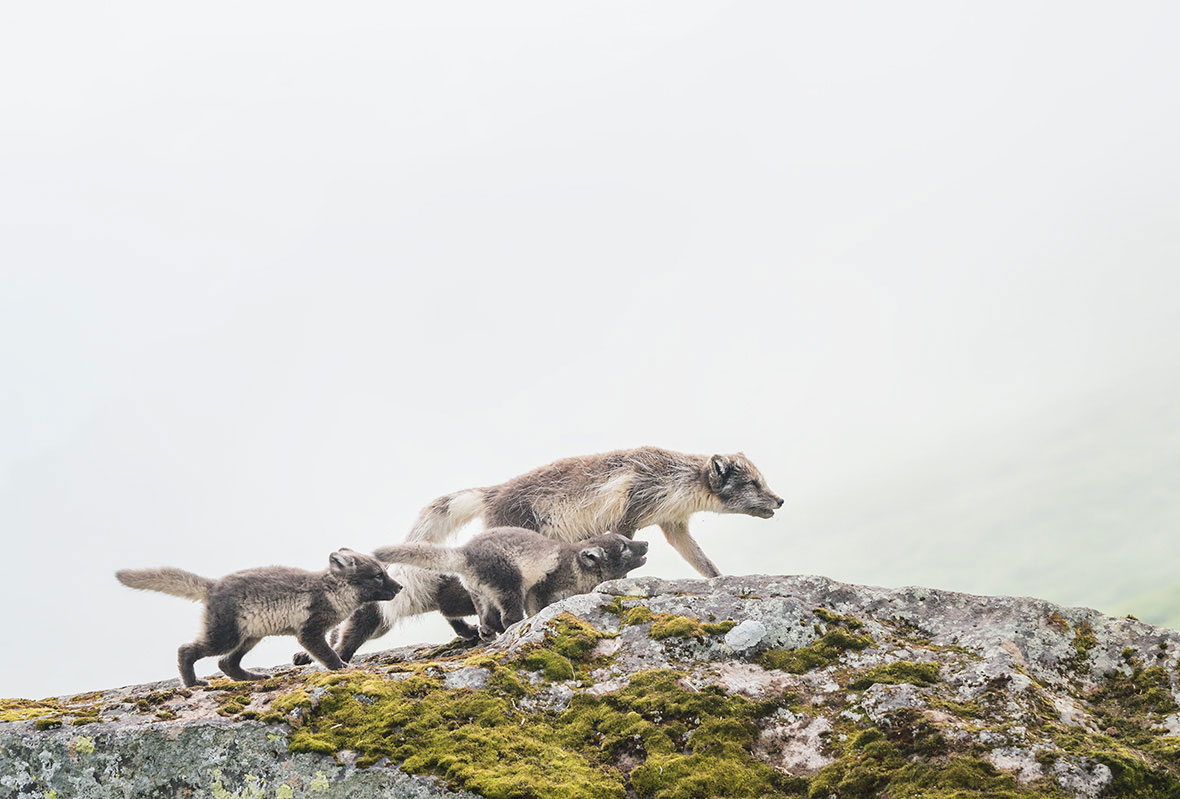
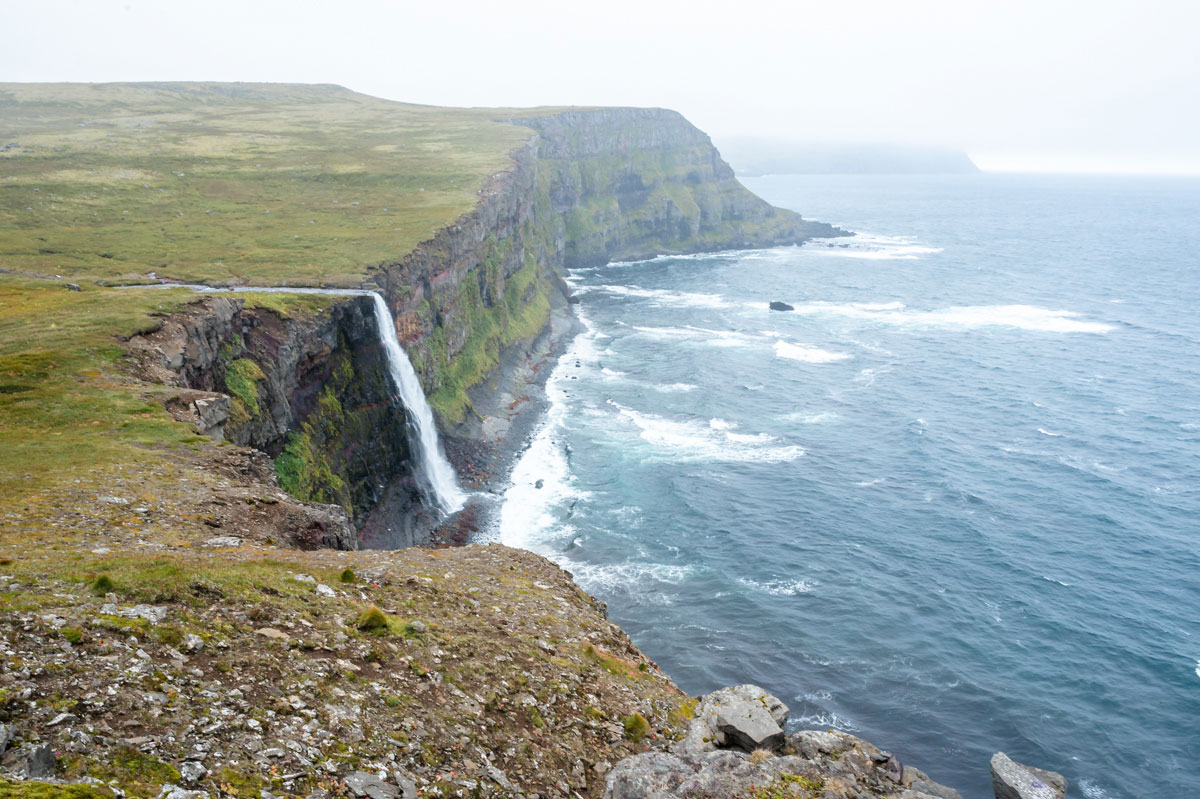
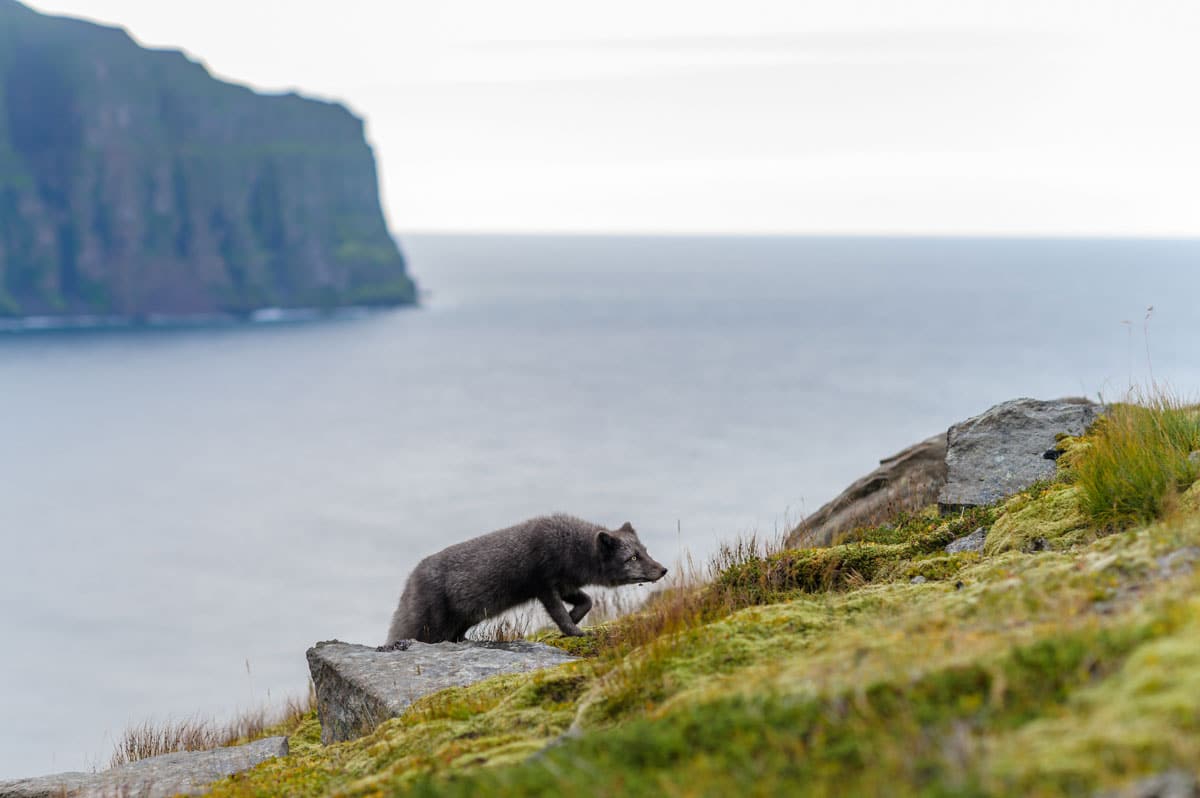
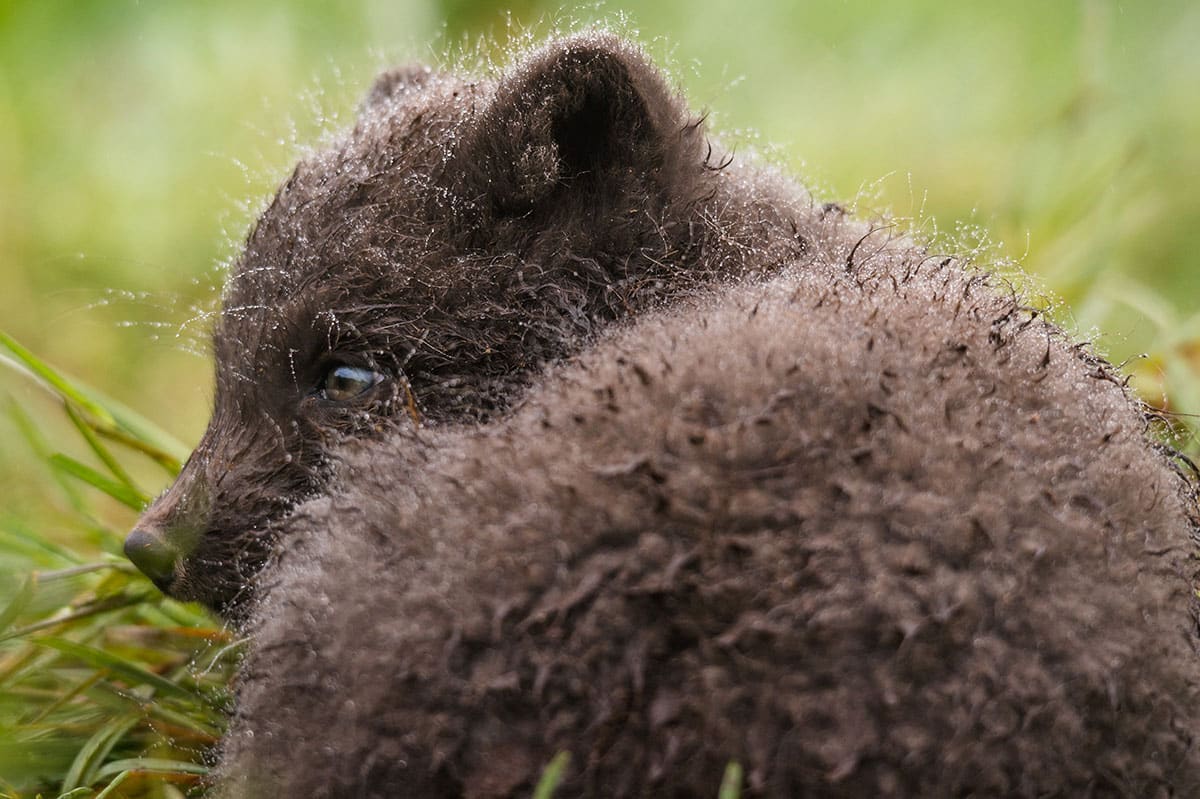
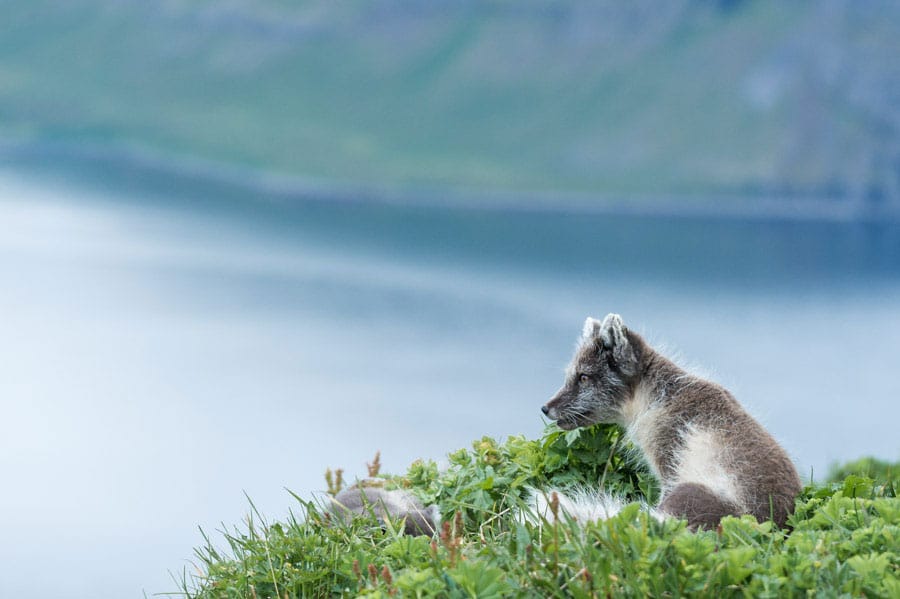
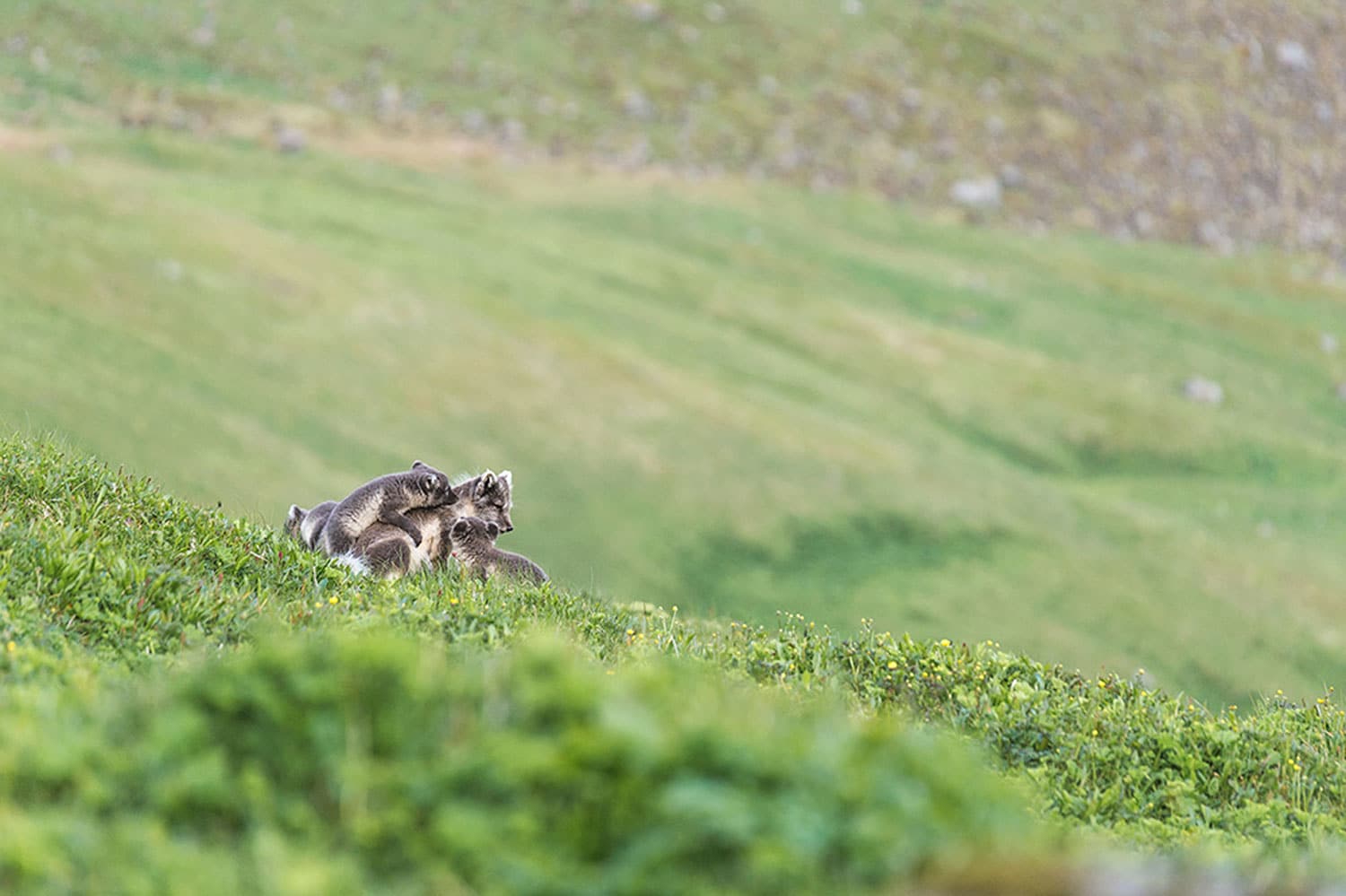
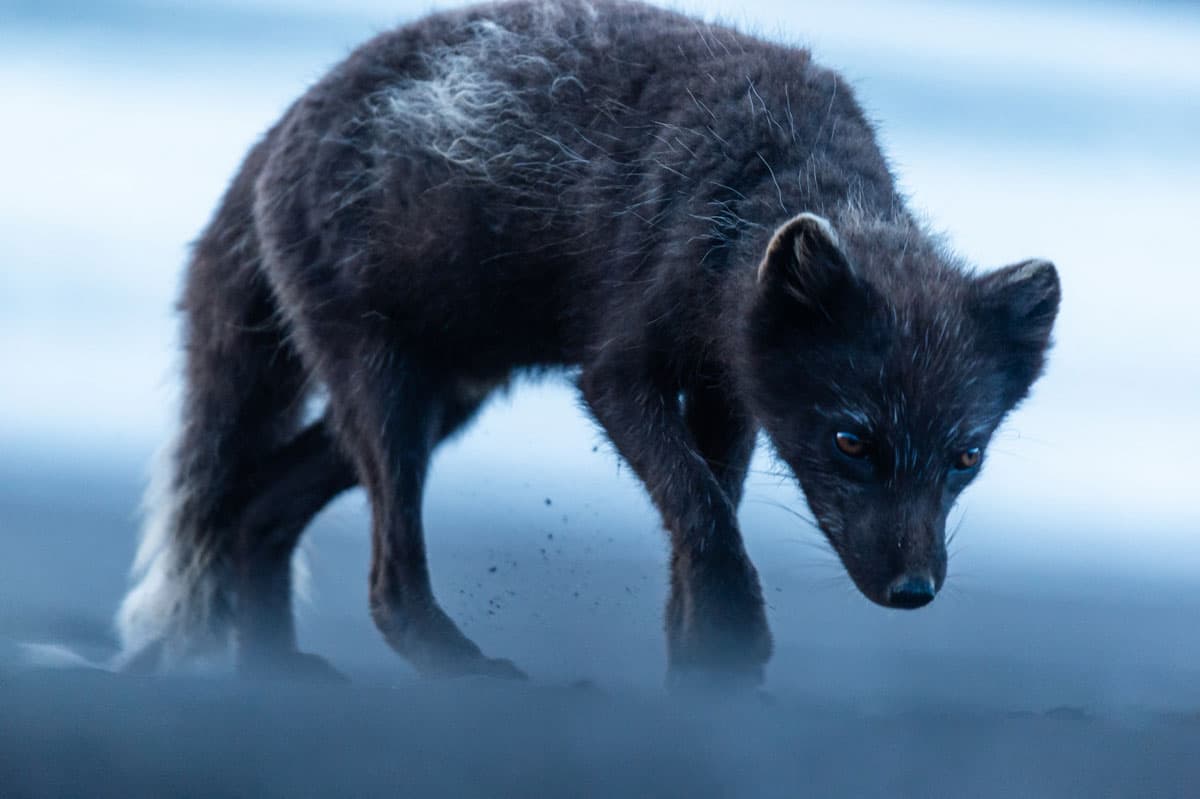
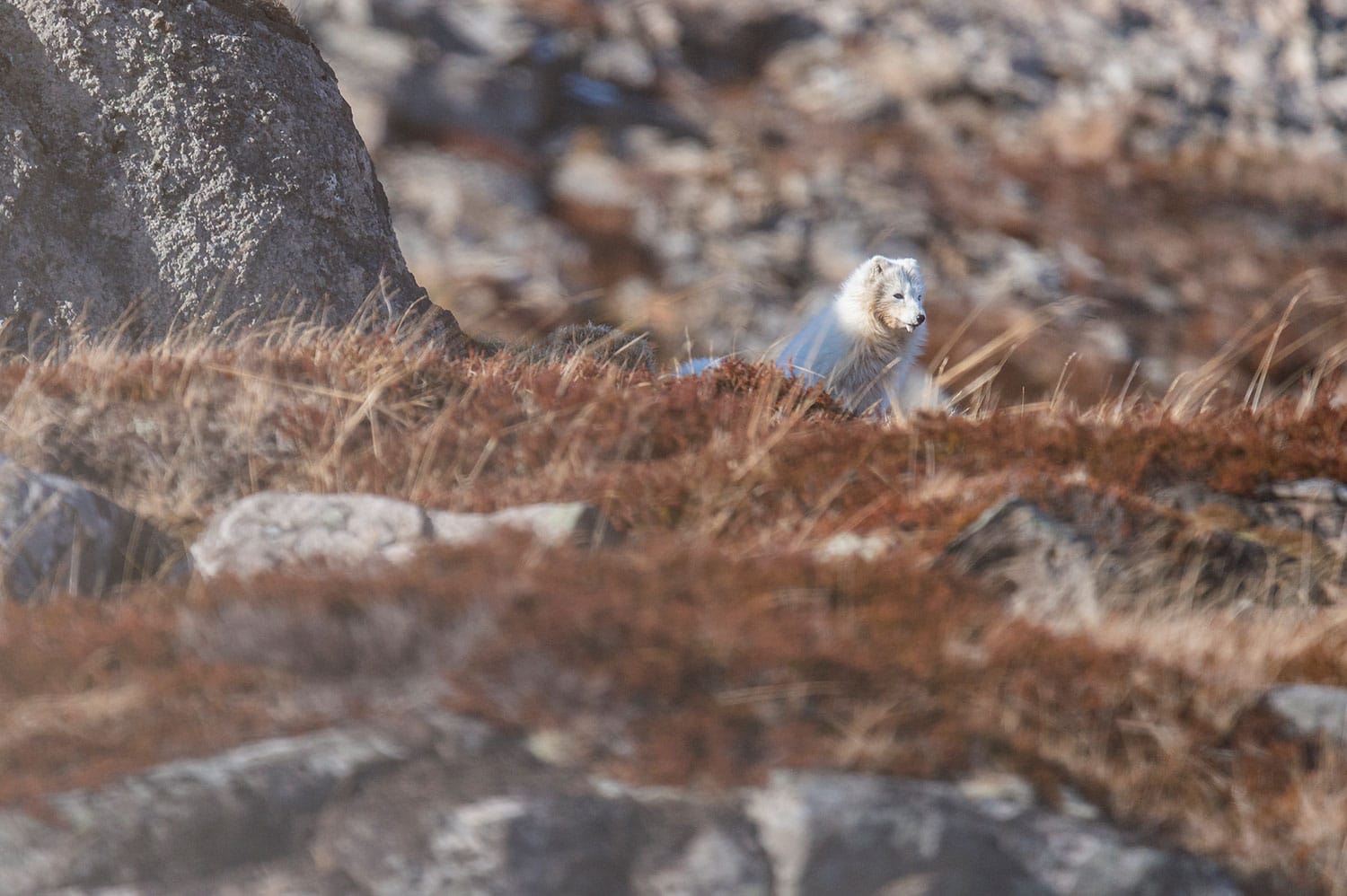
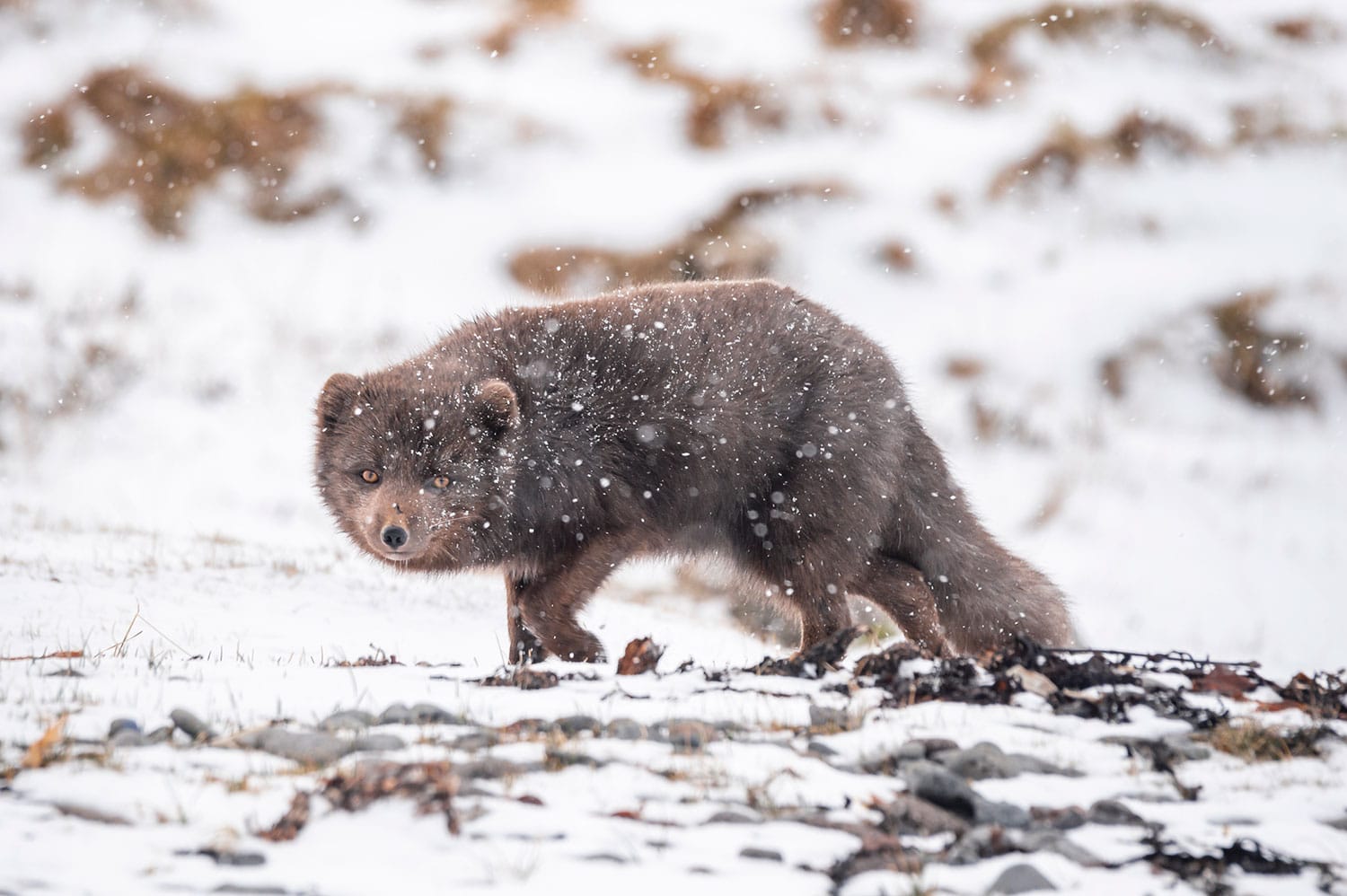
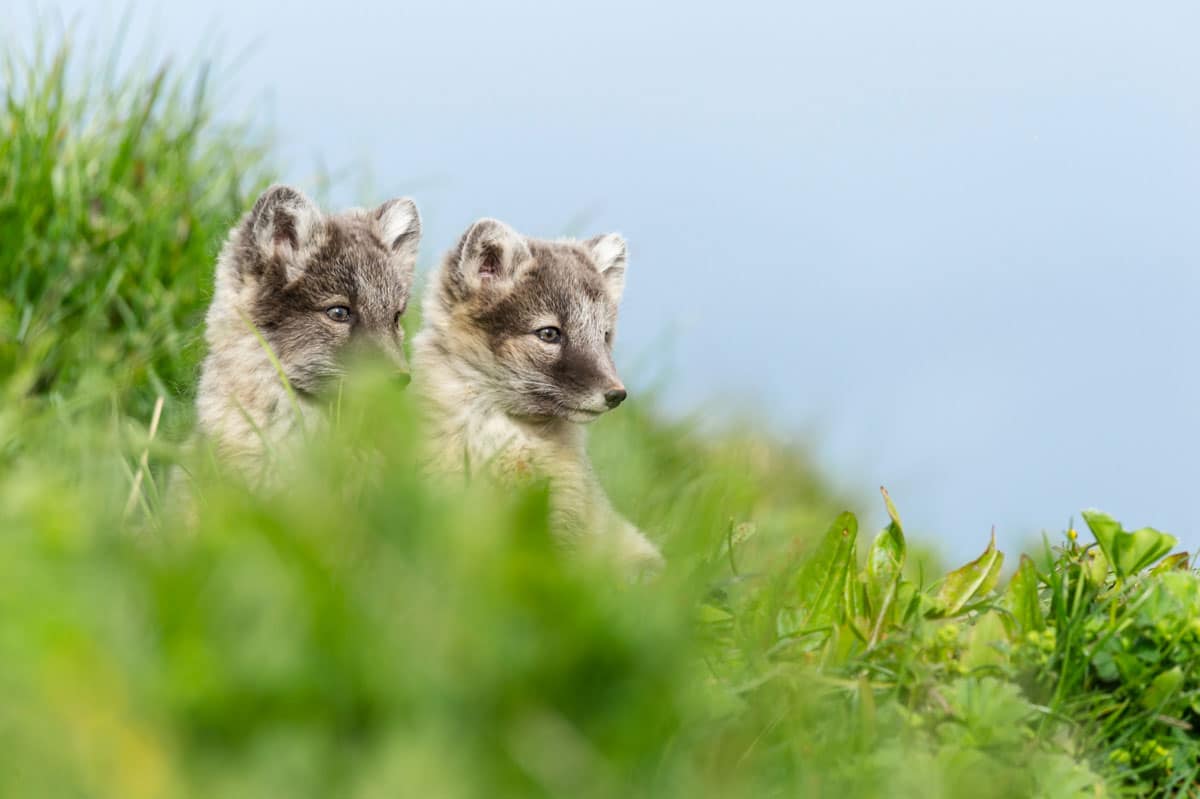
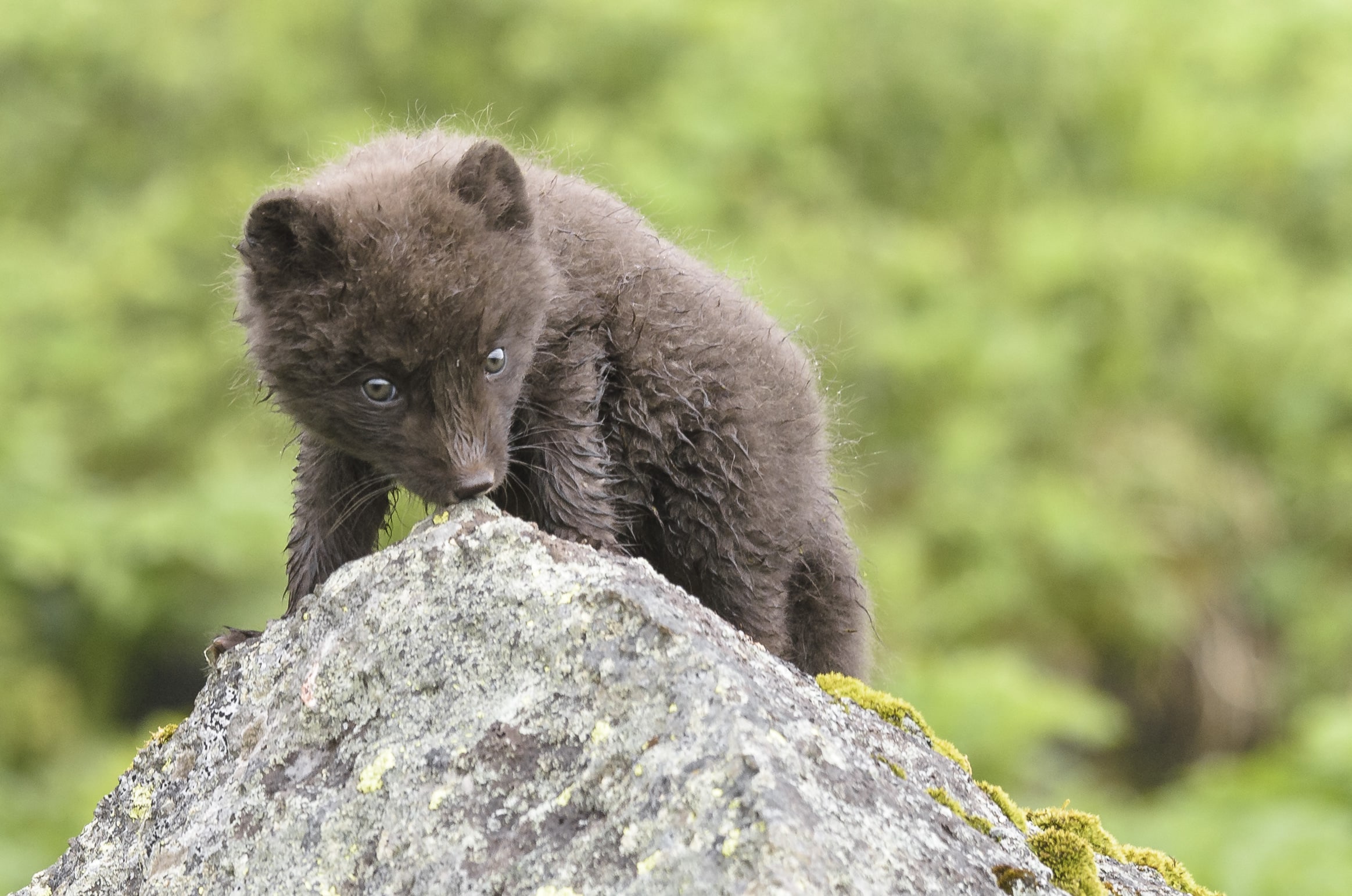
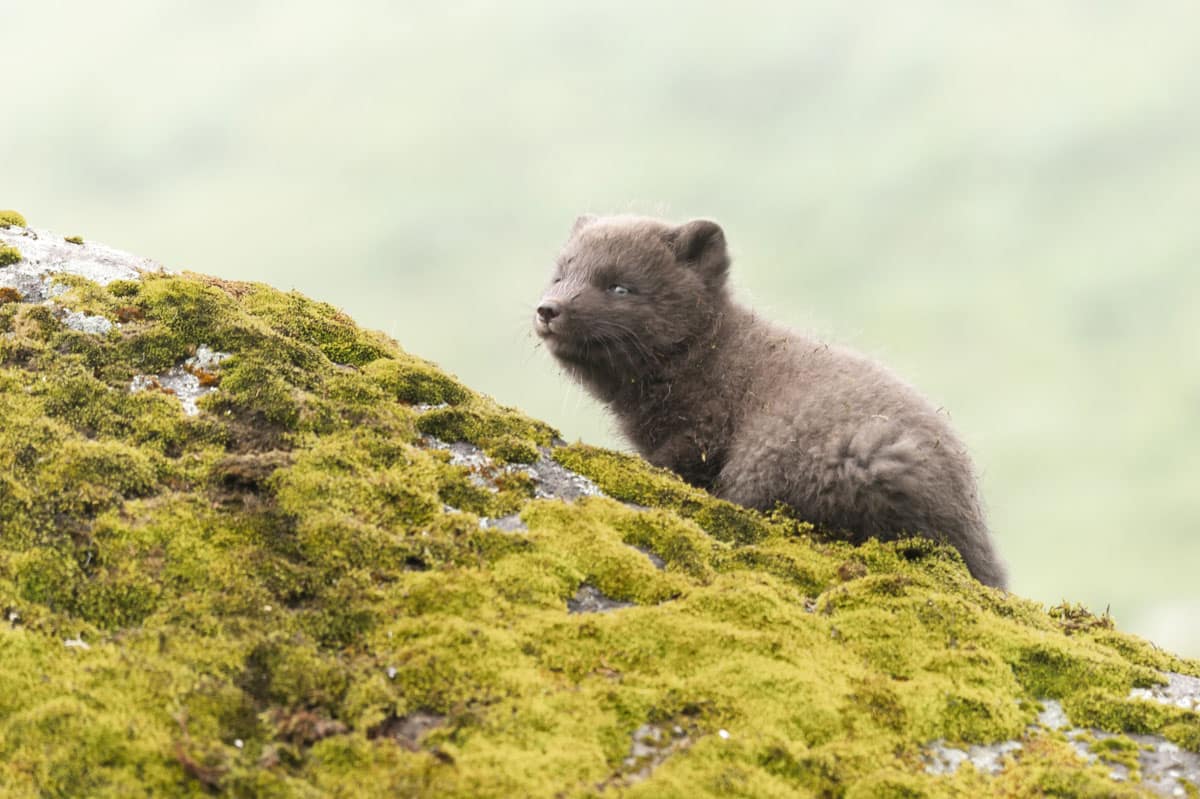
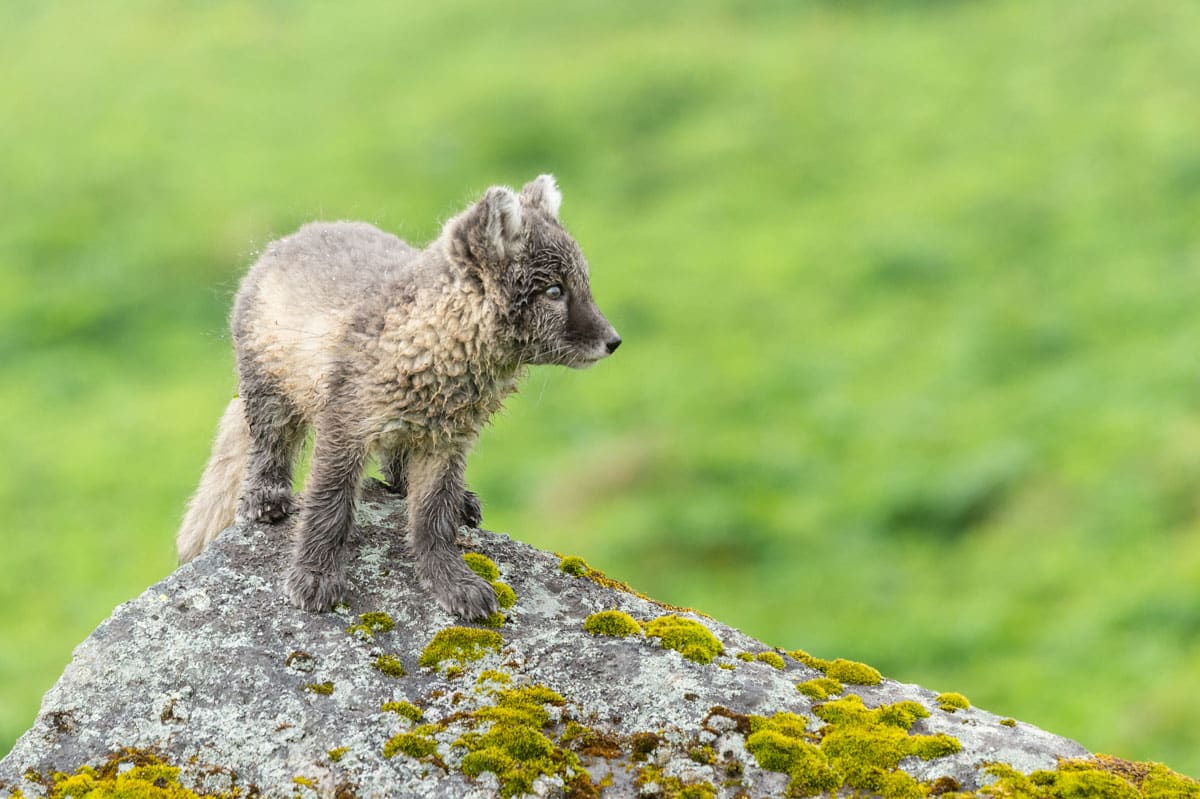
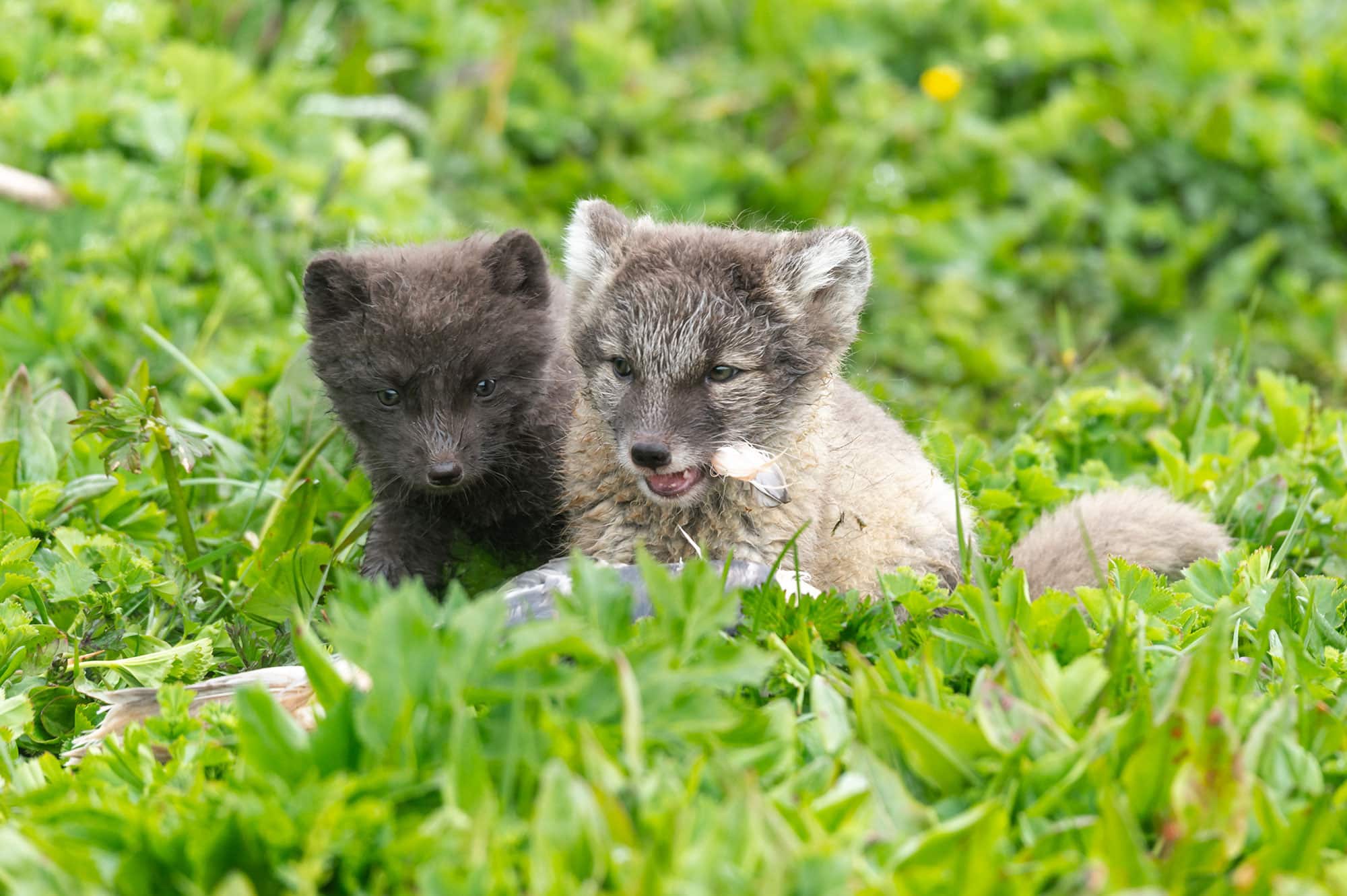
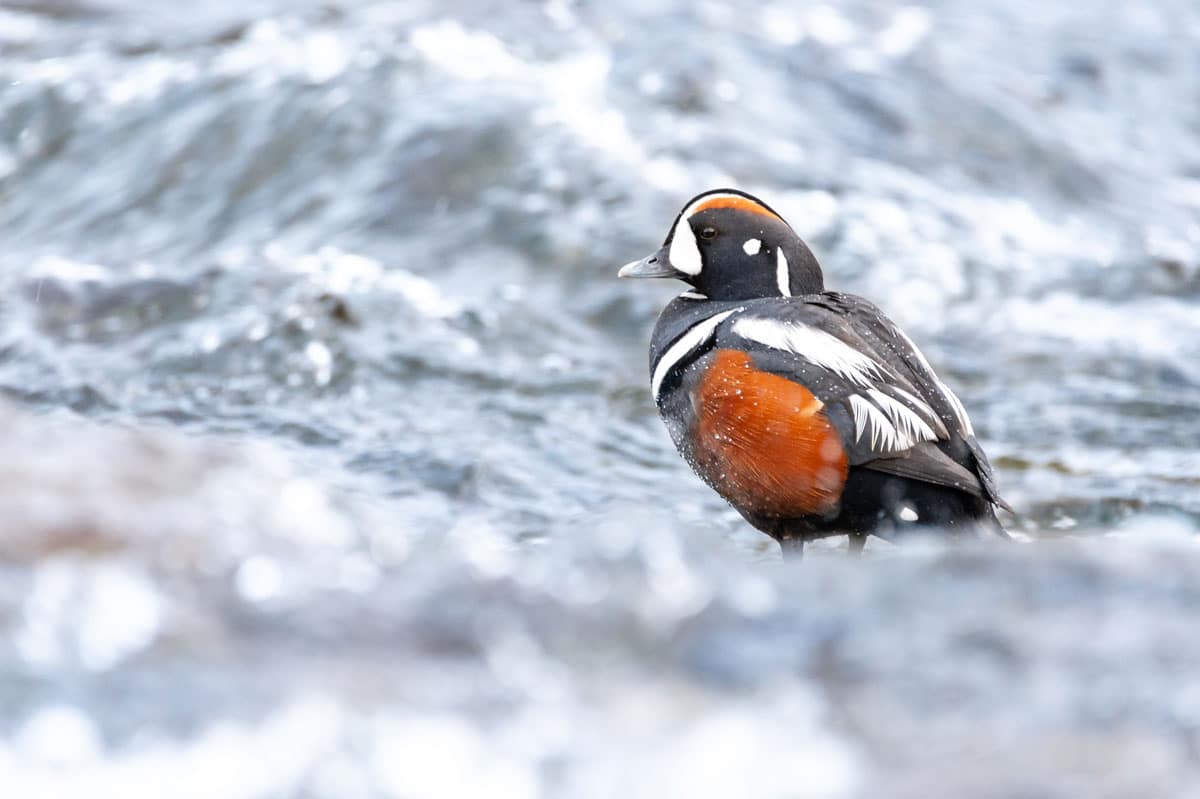
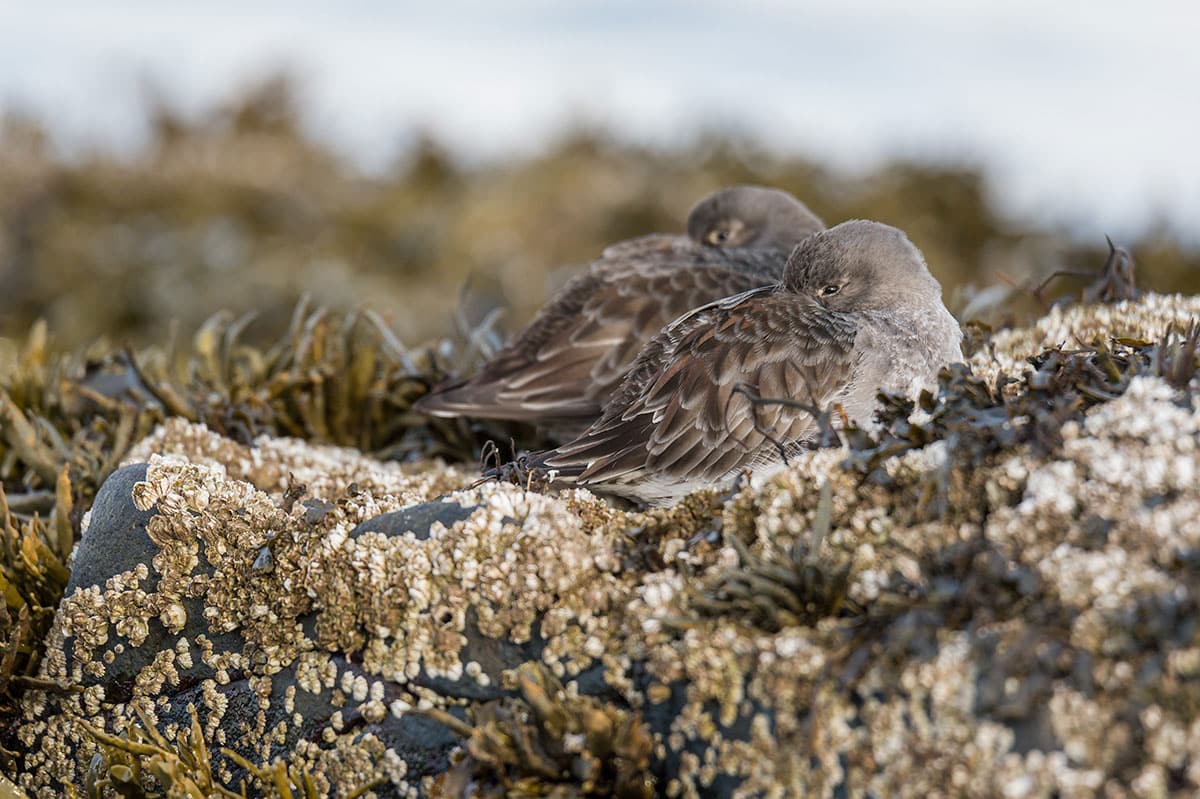
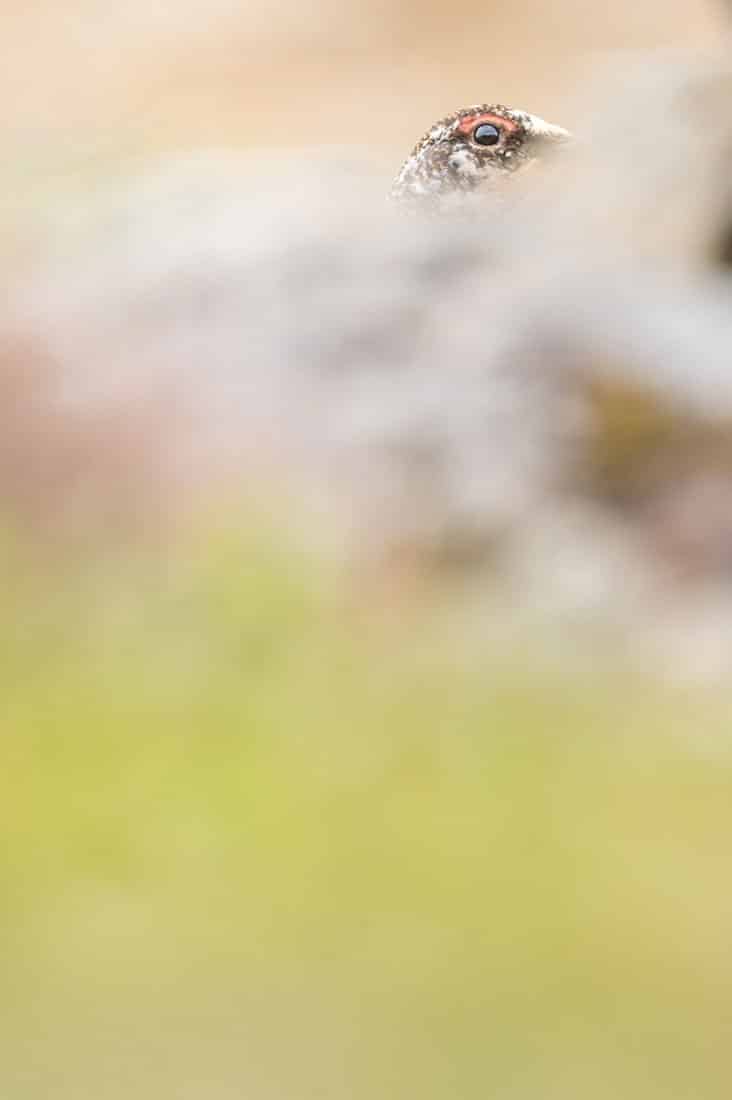
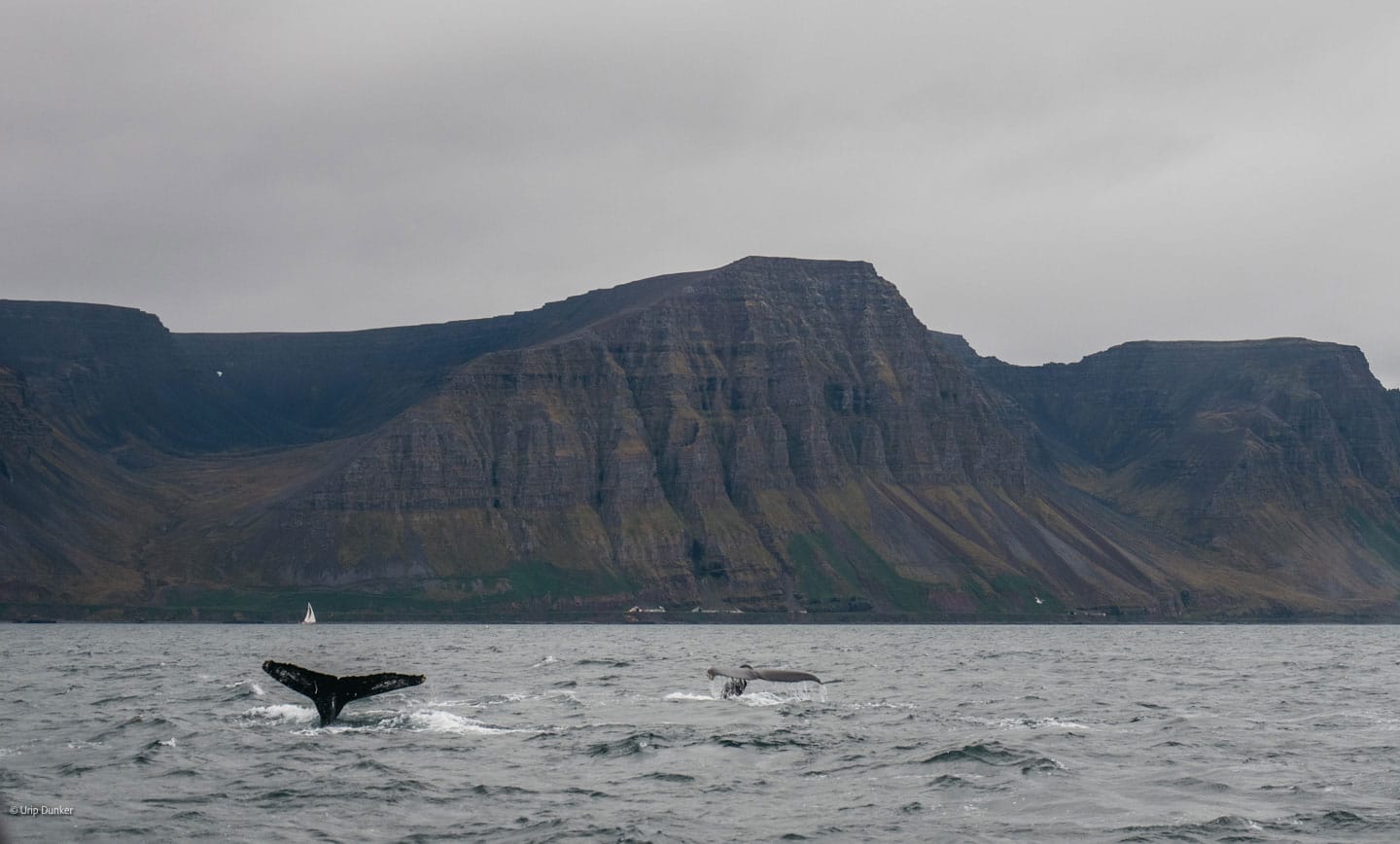
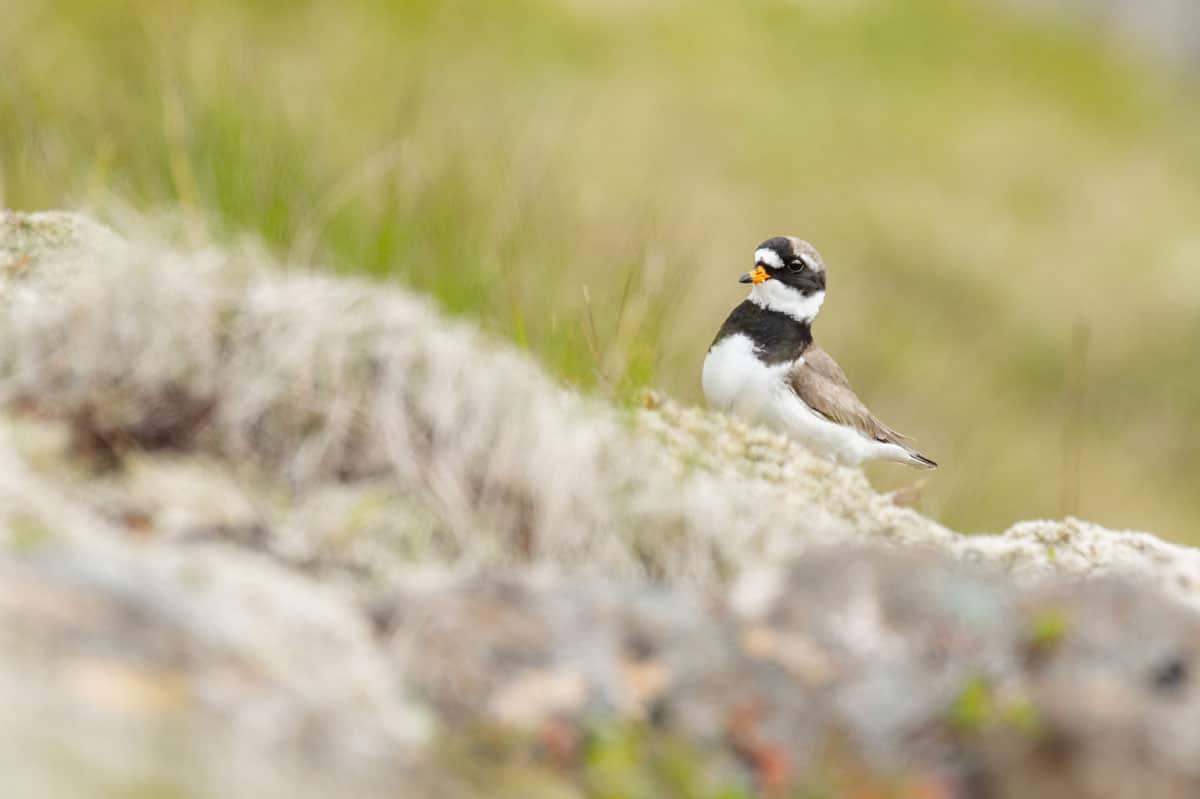
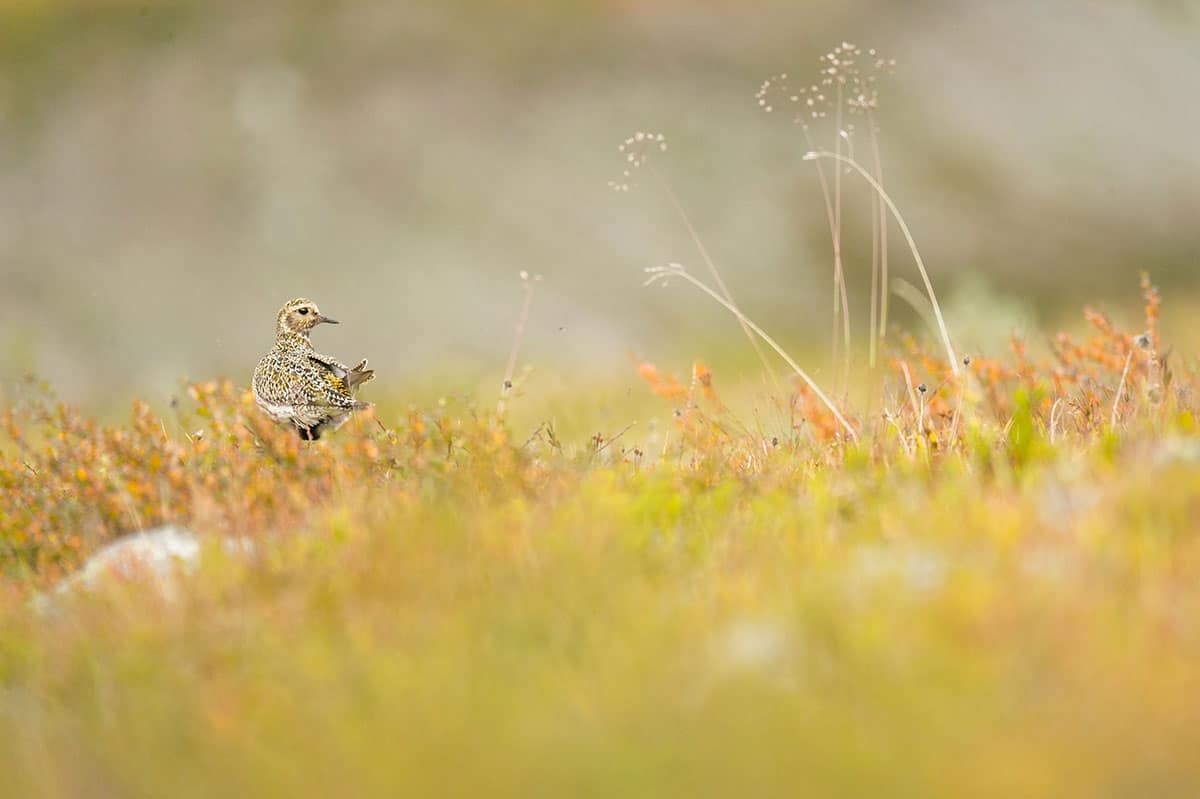
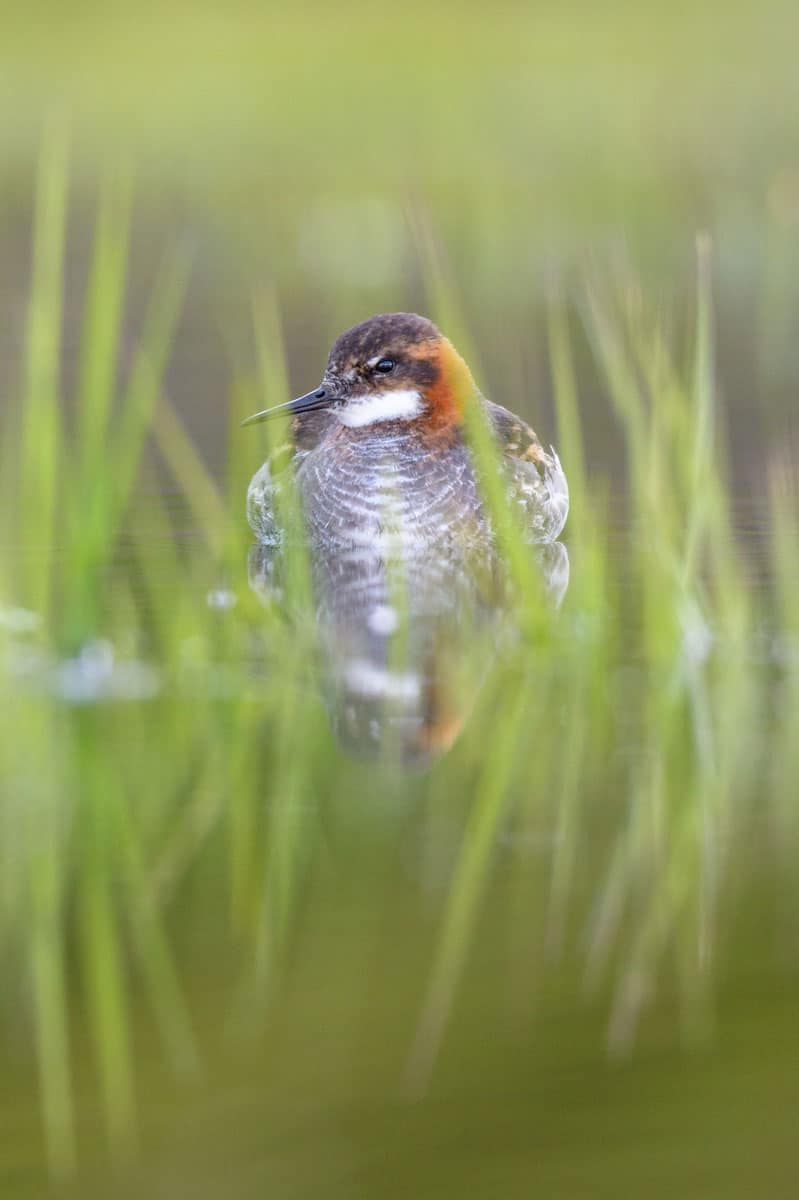
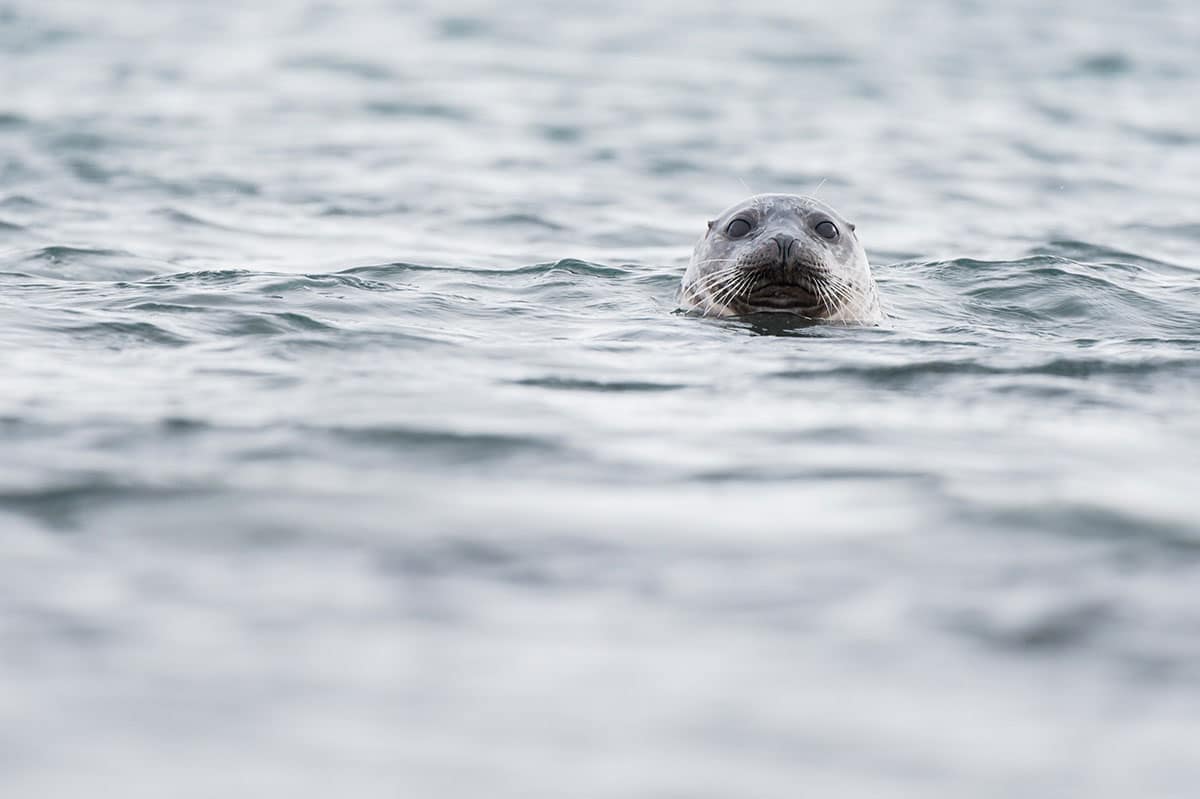
Sorry, the comment form is closed at this time.